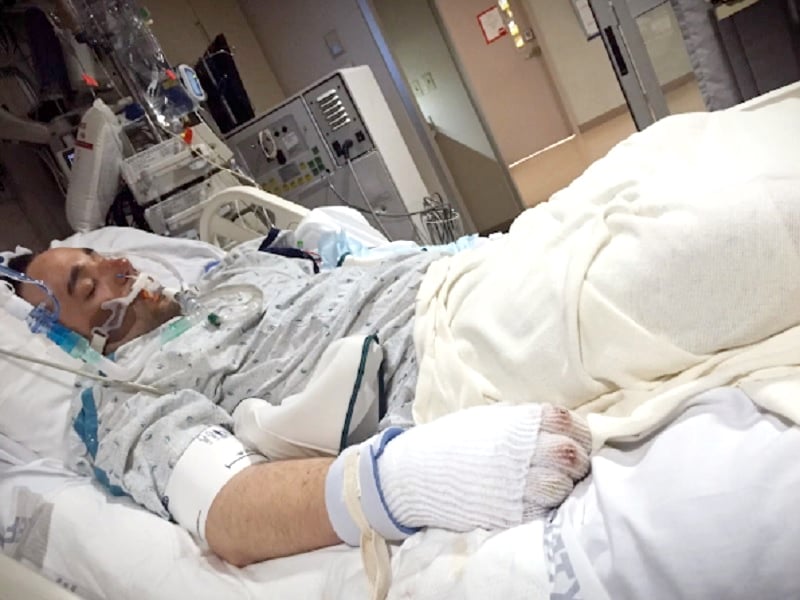Lucky would be an understatement to describe Justin Smith. The 26-year-old Pennsylvania man not only beat the reaper after being nearly frozen to death, but defied the odds and emerged from his icy coma without brain damage.
Central Pennsylvania is known for having some of the coldest winters on the east coast, and while residents are prepared for the winter freeze, disasters can strike at any time. In February of 2015, Smith was found on the side of the road near his home of McAdoo, Pennsylvania, unconscious and by all accounts dead after having spent the night exposed to the elements, with temperatures dropping to 4 degrees below zero.
The college student had gone out with some friends for a few drinks, but never made it home. Smith told the local news he had left the bar around 10 o’clock, but that’s all he remembers. The doctors who helped to save his life suspect he probably slipped on some ice and hit his head, before tumbling down the snowbank where he was found the next morning by his father.
“I looked over and there was Justin laying there and he was laying face up there like this,” said Don Smith. “He was blue. His face was lifeless. I checked for a pulse. I checked for a heartbeat. There was nothing.” The young man had spent the entire night out in the subzero temperatures and showed no signs of life when authorities arrived. The coroner came out with the state police, because everyone believed they were dealing with a dead body.
When the frozen Smith was taken to the hospital, Dr. Coleman, an emergency department physician at Lehigh Valley Hospital in Hazleton, refused to give up and held on to hope that he could be revived. “I said ‘no, not today,’” said Dr. Coleman.
Dr. Coleman and his team performed CPR on Smith for two hours before taking him to a hospital near Allentown, where he was hooked up to an ECMO machine. The machine which is called extracorporeal membrane oxygenation, uses a pump to circulate blood through a machine to warm it up, and restore oxygen as it’s circulated back into the body’s bloodstream.
Eventually, Smith started showing signs of life when his heart began beating again, but he wasn’t out of the woods yet. He was in a coma for the next 15 days, leaving doctors and his family unsure how much brain function he would have after being for the most part – dead. “We knew we needed a big, big miracle,” Smith’s mom Sissy Smith said.

Unexpectedly, his family got the miracle they were hoping for when he emerged from the coma without any brain damage. In fact, the revived Smith said he felt like he’d been asleep the whole time, describing it as “It’s like I woke up from a dream, but it wasn’t a dream.”
Amazingly, the doctors believe it was the hypothermia that saved Smith’s brain. Dr. James Wu, a cardiothoracic surgeon who helped save Smith, said that hypothermia can preserve the body’s organs for “a long period of time.”
While he didn’t escape the harrowing ordeal totally unscathed – he lost his pinkie fingers and all of his toes – he’s glad to be alive and is back in school at Penn State, finishing up his degree in psychology and even hitting the golf course again.
Grateful for the medical team that saved his life, Smith went back to visit the doctors and say thank you for their work. And for Dr. Coleman, the reunion reminded him why he got into the life-saving business. “This just kind of renewed the faith of why I do what I do every day,” said Coleman.
https://www.youtube.com/watch?v=ocnkuIvn5SQ

